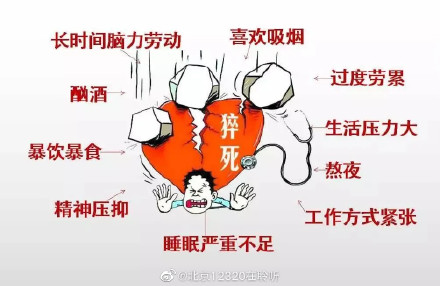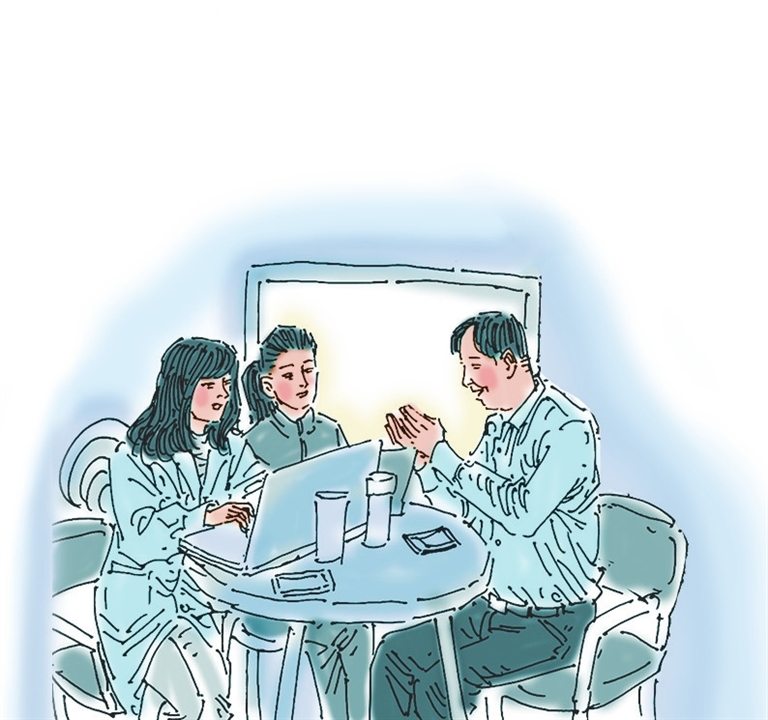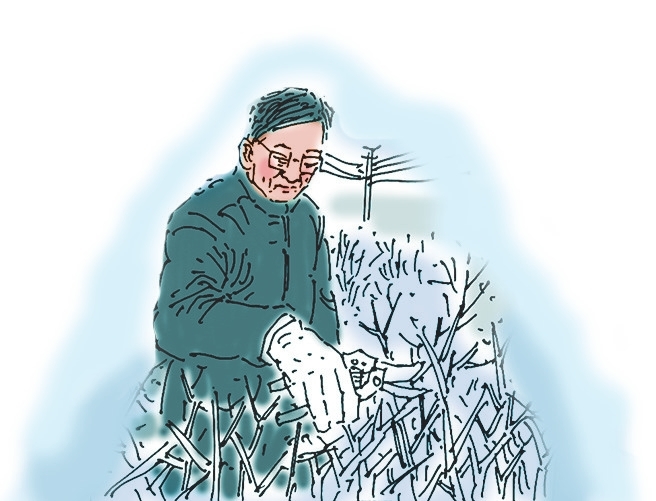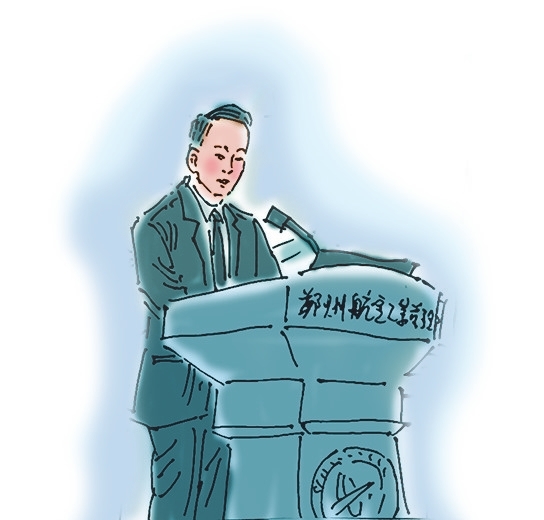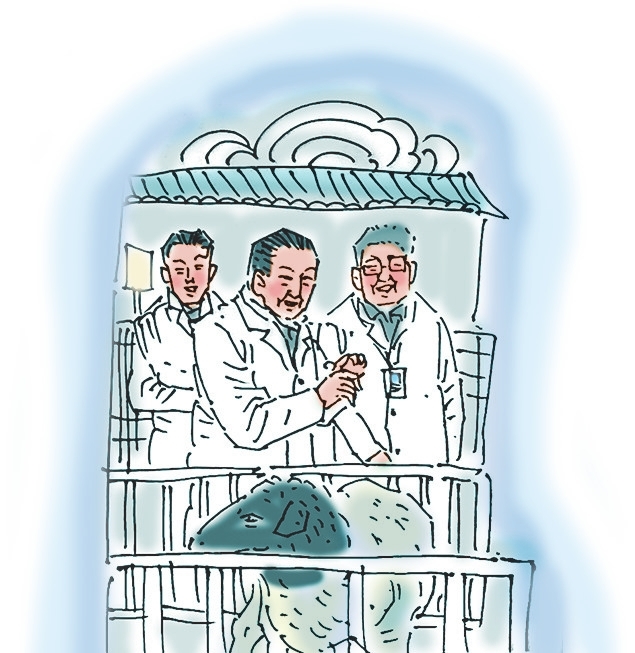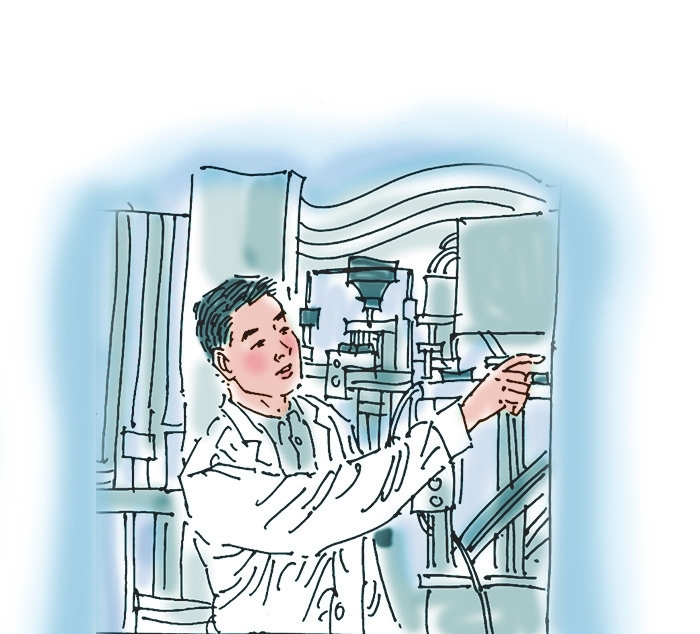Original: Jianwen Wang Chen
It is a "different kind" of county hospitals in China. In the ranking of county-level public hospitals, it rarely enters the top ten in terms of scale. However, in the refined management of hospitals, it is the existence of many big three.
In the eyes of local people in Dongyang, the most fashionable place in Dongyang is not a shopping mall, but a hospital.
There is no high-speed railway station in this county-level city with a population of 1 million, and the nearest high-speed railway station is in Yiwu. Passing through Yiwu Station is like a crowd in Spring Festival travel rush every day. It takes another 40 minutes by car and a desolate and congested journey to reach Dongyang.
After arriving in the city, I always thought that I had to go through a more congested road to get to the hospital. This is the inherent impression of most people on county hospitals-the most congested section of a county-level city must be the local people’s hospital, and the feeling of being crowded is like coming to another railway station …
But when I went to Dongyang People’s Hospital, I suddenly felt that there were fewer people.
This is not in line with the imagination of a third-class county-level hospital with a population of 1 million, a local medical treatment rate of 96%, 1,750 open beds, 1.76 million outpatient visits and 80,000 inpatients every year.
The lack of people is largely an illusion, perhaps because of neat and orderly spatial planning: the distance between buildings in the hospital is far away, there is no garbage on the ground, and the cars are parked in the underground garage and a four-story above-ground parking lot. Only a few taxis to pick up patients are parked in the open space in front of the outpatient building in a fixed lane.
Inside the emergency building, the aisle with a width of more than ten meters makes the waiting area full of people very small; People lead to the inpatient department, fever clinic, pharmacy, and the food court in the business district, which is rare in hospitals.
Perhaps it is because of the visual feeling: the circular chandelier with strong design sense, the elevator ceiling decorated with petals, the walls of different inpatient departments in orange, purple and blue, and the doctors in various departments in the inpatient department are concentrated in the central office, which is transparent and open.
There is no place like the county hospital in my impression. Since the board of directors of Dongyang People’s Hospital was established in 1993, it is no longer a Chinese-style public hospital directly controlled by the government in the traditional sense.
It is what the local people call a "hospital run by Taiwan Province people", but in fact it is a hospital that "Taiwan Province people donated money and changed its management mode". Hospital management system has been reformed for nearly 30 years, and hospitals have been managed by local teams in Dongyang. It is the first public hospital in China to implement the reform of corporate governance structure, and it is also the first hospital to complete the salary reform of public hospitals and implement refined management.
It is a "heterogeneous" county-level hospital in China, and it rarely enters the top ten in terms of scale in the ranking of county-level public hospitals in China. However, in the fine management of hospitals, it is an incomparable existence in many top three hospitals in big cities.
Some of its management experience can be used for reference, but it is an extremely difficult sample to copy, and the key steps that determine the development of this hospital are very accidental: the free donation of 10 million US dollars in the early 1990 s solved the financial problem of the development of public hospitals; The advanced reform of hospital management mechanism implemented nearly 30 years ago happened to meet a dean who knows the local culture and has the ability and experience. In 2004, the post performance salary reform was carried out in the rising period of hospitals, which counteracted the impact of the reform on the old mechanism.
A senior person in the field of hospital management lamented: If the performance reform is carried out now (the hospital has entered a platform period), Dongyang People’s Hospital can’t guarantee the effectiveness. They seized a good opportunity when they reformed.
△ Image source: yestone
Dongyang People’s Hospital, which has been quietly carrying out self-reform for 30 years, has suddenly become the focus of people’s attention when the reform of public hospitals in China has given priority to quality and no longer blindly pursued scale and quantity.
Reform of corporate governance structure in public hospitals in the 1990s
There is a bronze statue in front of the outpatient building of Dongyang People’s Hospital. The bronze statue is not Hua Tuo, Bian Que, Li Shizhen or Bethune, who are common in hospitals, but a scholar with glasses, a pen in one hand and a United Daily News in the other.
His name is Wang Tiwu. Wang Tiwu, born in Dongyang in 1913, left his hometown for Taiwan Province at the age of 35 and never returned to his hometown until his death in 1996.
In Taiwan Province, he founded the United Daily News and became a giant in the Taiwan Province press. In the early 1990s, Wang Tiwu returned to his hometown with donations for infrastructure, education and medical care, of which $10 million was invested in Dongyang People’s Hospital. At that time, the net assets of Dongyang People’s Hospital were only 3 million yuan. This $10 million has done several major things: $2.5 million has been used to purchase advanced overseas medical equipment; 2.5 million dollars established the best building of county hospitals in Zhejiang Province; With the remaining $5 million, a new secondary hospital was built in Weishan Town, the birthplace of Wang Tiwu, and now it is a branch of Dongyang People’s Hospital.
In 1990, the reconstruction and expansion of the hospital was completed, and the old man specially wrote a thank-you letter to the Dongyang government, praising the government for its high efficiency and cost-effective use of funds. When the conversation turned, the old man suggested that the hospital should adopt the management of American non-profit hospitals, establish a non-profit board of directors, and implement the legal representative system of the president under the leadership of the board of directors. The chairman of the board is appointed by Wang Tiwu, without salary or office expenses.
Seeing this proposal, the local government is inevitably somewhat embarrassed. In the early 1990s, Dongyang was already a hot spot for reform-Hengdian Group led by Xu Wenrong was approved as a social economic organization in 1992, and the government often sent local farmers and entrepreneurs to study abroad. The local leaders were all "seen the world".
But at that time, the hospitals were all owned by the government and were directly under the control of the government. Changing the management system of hospitals, especially implementing the "board of directors" system in modern corporate governance structure, is unheard of even for local government leaders who have "seen the world" and encouraged the development of private economy.
Dongyang government can’t shoot the board, so ask Zhejiang Provincial Committee for instructions. The Zhejiang Provincial Party Committee quickly agreed to this reform. The starting point of the provincial party committee’s support for hospital reform is based on the "United Front" thinking. They believe that Wang Tiwu is a senior official of the Kuomintang, supports a China, and donates a lot of money for free, expecting nothing in return. With this management model reform, the hospital still belongs to the government, and the donated money already belongs to the state-owned assets. Although people don’t understand the advantages of changing the management mode of hospitals, there is nothing wrong with it.
Finally, one year after Deng Xiaoping’s southern tour, in October 1993, Dongyang People’s Hospital completed the management system reform and implemented the president responsibility system under the leadership of the board of directors. The chairman of the board is Wang Tiwu’s client. The new chairman graduated from the University of Southern California with a doctor’s degree in civil engineering. He has studied and worked abroad for many years and is very familiar with the governance model of non-profit medical institutions in the United States.
Although there are two leaders appointed by the local health bureau and the State-owned Assets Supervision and Administration Commission, after the establishment of the board of directors, the Dongyang government kept its word, and the hospital’s personnel rights, fund distribution rights and operation management rights were all directly managed by the government before the reform and decentralized to the hospital for independent decision. The board of directors has formed three functions: decision-making, supervision and implementation. The president is responsible for implementing the decisions of the board of directors and undertaking the operation and management responsibilities in accordance with the social responsibility requirements of public hospitals. Under such a system, in order to enable the dean to better assume the responsibility of operation and management, the board of directors has granted the middle-level cadres the rights of appointment and dismissal, personnel recruitment and dismissal, salary distribution of internal employees, and daily operation and management.
However, the dean is also bound. For the non-recurrent expenditure of the hospital, the maximum amount that the dean can decide is 5000 yuan. The personal official consumption of the dean must be approved by the executive vice chairman, and the official consumption of the executive vice chairman must be reported to the chairman for signature.
Now it seems that the "transformation" of Dongyang Hospital in 1993 was the first in China. In terms of ownership, hospitals are still state-owned; In terms of establishment, hospitals are still public welfare institutions; On the management mechanism, the hospital is a real modern enterprise governance. Even today, after more than 20 years, this "mixed system" of Dongyang Hospital is still a very special existence in the medical and health sector of China after the complete privatization of some public hospitals, management buyouts and de-establishment.
For a long time after the restructuring, most hospital employees did not know the significance of this reform. As long as there are still institutions and their wages are not reduced, they feel that nothing has changed. It’s just that the leaders of Dongyang health circles have talked about it from time to time. "The dean is not appointed by the government, and he has no face." The dean appointed by the board of directors instead of the government always seems to feel inferior. Those who have this idea also include people from Dongyang People’s Hospital.
Another reform after nine years.
In the first seven or eight years after the reform of hospital management system in 1993, the advantages and disadvantages of the system were not reflected. The biggest change in the hospital is that managers have more opportunities to communicate with the outside world. At the end of 1990s, Ying, then vice president, rushed to go abroad for the first time and visited hospitals in Singapore. He was very shocked. It turned out that hospitals were not all painted with green or blue paint and white walls, but they could also look like hotels.
In the ninth year after the restructuring, in 2002, China’s economy entered a period of rapid development, and all over the country, public institutions raised their wages in succession. In that year, Dongyang, which ranked 71st among the top 100 counties in China, was issued four times by the government to raise the basic salary of employees in public institutions. This is a good thing for employees, but Dongyang People’s Hospital has repeatedly complained. In those years, the hospital just gave employees a bonus, and now it is difficult to support the hospital’s economic ability to implement the order of increasing basic salary. And if the bonus is to be lowered, employees will have opinions.
At this time, it was suggested that the hospital was not restructured earlier. The board of directors has the right to decide how to use the money and how to distribute the internal salary. Therefore, in order to avoid the impact of government documents on the hospital’s independent distribution mechanism, Dongyang People’s Hospital initiated the reform of hospital performance-based salary distribution. At that time, the vice president in charge of administrative logistics should be the first, and the salary reform plan was mainly designed with him.
△ Image source: yestone
It should be recalled that as early as 2000, the hospital management began to brew an independent salary system reform: although the local government decentralized management, it invested little in the hospital financially. There are thousands of employees in the hospital, and the annual salary is only more than 500,000 yuan, which is related to the environment that the government has not invested enough in public hospitals for many years. Objectively speaking, it is the most crucial step for hospitals to maintain development and establish their own salary incentive mechanism.
In Dongyang’s economic ecology, there are many reform models of private economy. In 2002, Dongyang Hengdian Film and Television Base became famous for the release of Zhang Yimou’s Hero, and Hengdian Group, which spans many industries, has been running for many years.
However, when it comes to the reform of performance distribution in public hospitals, even under the background of board management, it is extremely difficult to face employees who still maintain the establishment and mentality of public institutions.
It took several years to brew the salary performance reform and finally implement it. The management team of Dongyang People’s Hospital doesn’t feel anything wrong. Every step of reform is difficult. Steady is the most important thing.
"Seven or eight thousand yuan a year, you can raise a wife."
Generally speaking, the total annual salary of employees in public hospitals is set by the local health bureau at the beginning of the year. No matter how well the hospital employees do this year, the total salary is unchanged. In this system, there is no "incentive" for doing more and doing less.
How should the total salary be distributed, so as to combine the two goals of hospital development and employee motivation? The hospital management, represented by should be the first to compete, invented a concept of "medical added value". Different from the concept of total hospital income, the medical added value is the total hospital income minus the "variable cost", which is different from the fixed costs such as buildings and equipment, and includes the money for purchasing drugs and consumables, as well as expenses such as property management fees. In a popular sense, medical added value is similar to the concept of gross profit of enterprises. Compared with the pure income index, the gross profit index takes into account both income and cost, and focuses on improving the overall efficiency of the hospital.
The added value of medical care is the money that the hospital can directly control. The board of directors finally decided that 47% of the annual "medical added value" will be used for employees’ salaries and the remaining 53% will be used for hospital development. The higher the added value of medical care, the higher the income of employees. To increase the added value of medical care, it is necessary not only to increase the workload and business income, but also to control the cost of drugs, property expenses and other management expenses, so that the enthusiasm of employees will be mobilized all of a sudden.
The remuneration of the dean and the leading group is determined by the board of directors. In the United States and China, there are directors who invest and start businesses, who are well versed in the operating rules of the market economy. Therefore, the salary of the president of Dongyang People’s Hospital is higher than that of the president of a public hospital under the direct leadership of the government.
Hospital management has the right to formulate employees’ positions and performance pay. Post salary is dead, performance salary is alive. The higher the proportion of performance pay to the total salary, the greater the enthusiasm of employees, but the higher the instability of employees; On the contrary, the proportion of post salary is high, and the personnel are stable, but it is also easy to raise lazy people. At this time, the special institutional advantages of Dongyang People’s Hospital have emerged: employees have career establishment, so there is no need to be afraid of stability. We should strive to set the performance pay at 70%-75% of the total salary.
How to formulate the performance of employees in different positions? This field is a concentrated flashpoint of contradictions. In the past, the treatment of employees in public hospitals was similar, and the salaries of doctors, nurses and logistics staff were almost the same, which was obviously unreasonable, but no one dared to move. At that time, Dongyang People’s Hospital decided to widen the income of doctors, nurses and logistics personnel. Pay attention to widening the gap, such as the salary system of hospitals in Singapore, where doctors’ income is seven times that of nurses, and the reform of Dongyang People’s Hospital cannot implement this standard at once. After repeated weighing, the hospital management finally narrowed the wage gap between doctors, nurses and logistics staff to 1.4: 1: 0.8.
After designing the post salary coefficient, the reaction of nursing staff and logistics staff is fierce. According to the calculation of the total salary of the previous year, a logistics staff found that according to the new regulations, their total annual income was seven or eight thousand yuan less, and the total amount was only 20 thousand yuan, while the doctor’s income was more than 10 thousand yuan a year, so he could get 40 thousand or 50 thousand. The logistics staff found that they should be the first to complain: "Dean Ying, seven or eight thousand yuan a year can support a wife." Should be the first to respond: "Why do you have so many wives?"
Later, he reasoned with the staff in detail: "Now, the income of doctors in our hospital is 40,000 to 50,000 a year. He wants to jump to a private hospital and get 70,000 to 80,000 a year; If you jump ship, can you get 20 thousand? Do the math. Who is the loser? Or the doctor suffers. " The employee fell silent. The hospital then gave the logistics staff a reassurance: "Let’s work hard, the total salary will go up, and the income of the logistics staff will also go up. If the growth rate is large, it will not decrease, but it may rise. "
The employee thought for a moment, and Dean Ying has worked here for so many years, so he won’t make a casual statement. He left in doubt. Subsequently, in the hospital post performance reform voting meeting, among more than 60 employee representatives, more than 40 votes were in favor, most of them were doctors, 19 abstained and there was no negative vote. The difficult salary distribution reform started like this.
In 2002, in the first year of salary reform in Dongyang People’s Hospital, the total salary of the whole hospital increased by 40%. Only one of the more than 60 logistics staff reduced their salary, while the others not only did not decrease, but also increased. In the following years, the distribution of performance pay and bonus became more diversified. The total income of the highest-level chief doctor in the hospital added up to more than 800,000 yuan a year, which was almost the same as that of doctors in provincial hospitals.
Looking back now, the salary distribution reform of Dongyang People’s Hospital at that time was very in line with the salary distribution system reform of public hospitals promoted by the state in 2017 15 years later.
Hospital is not only a public welfare organization, but also an economy that needs management.
In 2004, after the SARS incident last year, the government and the industry have reached a consensus that medical and health undertakings must increase investment. At the same time, on the one hand, the basic medical security system in China has gradually completed full coverage, and the ability to pay for medical insurance funds has been greatly enhanced; On the one hand, governments at all levels have increased financial investment in public hospitals, and hospital revenue has entered the fast lane.
That year, the Zhengda First Affiliated Hospital, which was later called "the largest hospital in the universe", was about to usher in its outbreak. The number of outpatients and inpatients in Dongyang People’s Hospital also ushered in a big increase in 2004. In the big environment that public hospitals all over the country are competing to increase beds and equipment, and hospital income is rolling in, we should try our best to have a clear thinking: in the case of insufficient state investment, we should not only let the people spend less money and look after the disease, but also let the hospital develop itself and ensure the income of employees, which is an important management topic faced by hospital directors. "Although the hospital is a public welfare organization, it is also a big economy. All economies need management."
From 2004 to now, China has undergone two rounds of medical reform, among which public hospital reform and drug reform are the most important. The starting point of the medical reform policy is to achieve the comprehensive goal of improving the service level of medical institutions, controlling the cost of medical and health services, reducing the economic pressure of medical insurance funds and the people, and improving patient satisfaction. As we all know, all parties have different demands, and it is not easy to promote medical reform. In the overall environment of the whole industry, Dongyang People’s Hospital has created a unique small environment, and some reform practices can be called samples of public hospital reform.
As early as 2000, Zhejiang’s health economic policy has undergone several major adjustments, from the "price increase" of drugs to the downward adjustment of medical examination fees, and then to the 15% addition of drugs. Many public hospitals accustomed to obtaining disposable funds from drugs are at a loss, and almost half of them have suffered operating losses, greatly reducing their sustainable development capabilities.
At this time, the operating mechanism with medical value-added management as the core should be put forward first, which has brought unique operating performance to Dongyang People’s Hospital: on the one hand, it has promoted cost control and reduced the items of medical value-added; On the one hand, it is to expand the scope of hospital services and increase the added value of medical care. As a result, the hospital’s medical added value reached more than 45%, which was much higher than other hospitals.
Starting with drugs is a key measure to reduce costs in Dongyang People’s Hospital. The first move was to make a false high drug price. At that time, the hospital adopted the method of "second negotiation" and "taking turns to set the price", which reduced the drug purchase price by tens of millions of yuan and all the profits were given to patients. The second measure is to control the dosage of drugs. The hospital delineates four "red lines" of the proportion and average dosage of drugs, and more than 20% is deducted from the performance salary; The third measure is to control the right of residence, authorize the use of antibiotics at different levels, and manage antibiotics at different levels according to the price. Unauthorized use requires approval. These three measures have made Dongyang People’s Hospital gain the reputation of "cheap drugs" and "doctors can’t prescribe large prescriptions", and the proportion of drugs is now controlled at around 26%.
△ Image source: yestone
Control drug prices, but also control materials. Dongyang people’s practice, one is to reduce the purchase price, the other is to control the dosage. Taking orthopedic materials as an example, the hospital directly negotiates prices with various manufacturers or first-class agents, realizing factory direct sales, which significantly reduces the price of domestic orthopedic materials, and then the hospital gives all the reduced expenses to patients. The hospital built a digital image transmission system (PACS) in 2005. Now, no film in the hospital can save patients more than 6 million yuan every year. At the same time, the hospital also strictly controlled the cost of reagents for inspection. After these careful calculations, the material cost of Dongyang People’s Hospital is 1/4 lower than that of similar hospitals.
Strengthening cost control, in addition to the most important drugs and consumables, all aspects of hospital logistics management are also promising.
Careful people will find that the time of Dongyang People’s Hospital can be judged by lights. At 11: 30 noon, when the hospital has the least crowds, the lights will suddenly dim, and at 1: 30 in the afternoon, the lights will light up with the crowds. This design can save hundreds of thousands of yuan a year. For the same hospital of more than 100,000 square meters, the property cost of other similar hospitals is 20 million RMB, and Dongyang People’s Hospital only spent more than 7 million RMB.
Last year, when the dean of a well-known 3A hospital visited Dongyang People’s Hospital, he said that the total income of their hospital was 6.8 billion yuan, which was five or six times that of Dongyang People’s Hospital, not including the government’s allocation of several hundred million yuan, but they could not pay their salaries and lost more than 200 million yuan. "This is a problem in the economic operation management of the hospital." We should try our best to make a diagnosis soon.
From another perspective, this is the advantage of Dongyang People’s Hospital.
Wang Chen | Written by Micro Signal: 2174127
We respect the original copyright, please do not reprint it without authorization.
Wang Jilu | Authorized Reprint
Micro signal: wangjilu006
Read the original text




